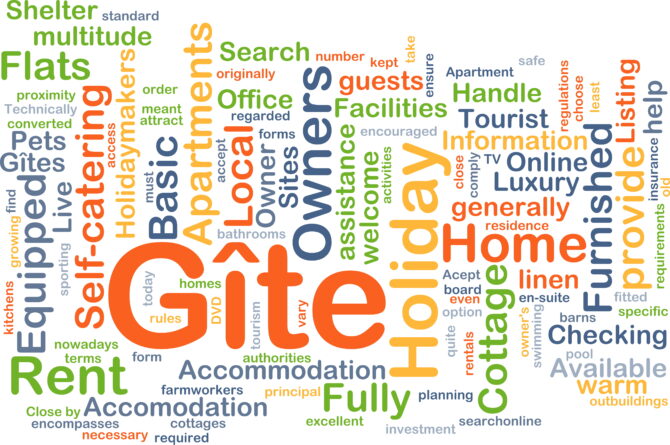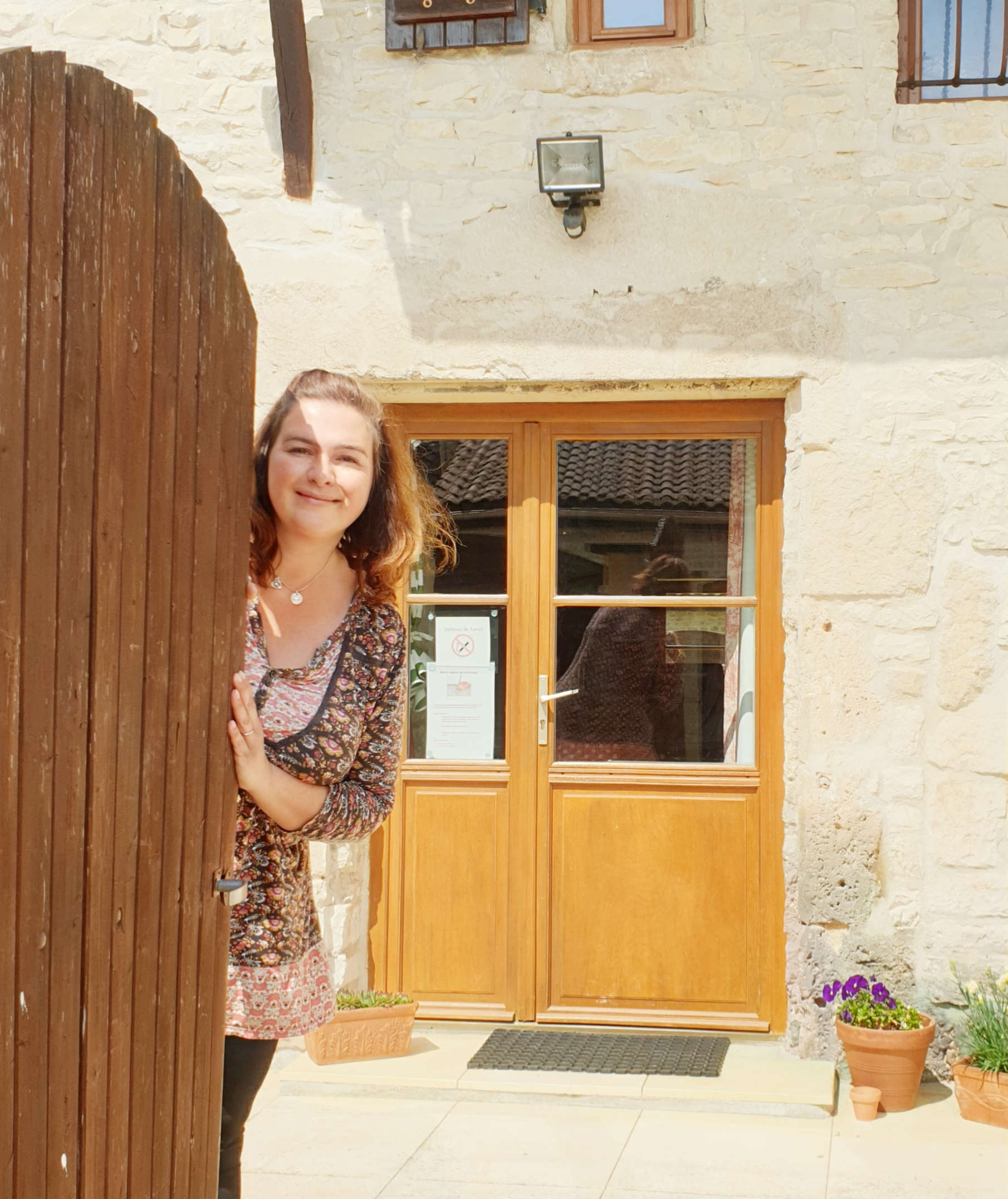Gite Classification with Gites de France: Our Experience
Feature


After writing her article Gites de France: A Thing of the Past or Are Gite Owners Missing a Trick? more than a year ago, gite owner Carol Paylor went ahead with reclassifying her gite – here, she shares her personal experience and what to expect.
Assuming your gite is registered with the Mairie, and it meets the criteria, you may choose to have your property ‘Classified.’ Here is our recent, personal experience of gite reclassification at La Grue Gites.
What is gite classification?
First of all, is your property a gite? A gite itself is defined in French law as specifically a villa, apartment, or studio that is not the renter’s primary residence and is rented out by the day, week, or month for holiday/ short-stay purposes. (See Article L. 324-1-1 du Code du tourisme.)
Gites differ from other sorts of tourist accommodation in that they are exclusively for the use of that sole renter, they do not have a reception desk or reception area, and they do not provide services as a hotel would, such as daily cleaning, linen changes, or food. The owner may or may not be present to welcome guests.
Why did we opt for reclassification?
Our previous five-year Classification was due to expire early this year, and although there was uncertainty surrounding the possibility of changing tax benefits and fiscal regime due to the 2024 Loi des Finances, we decided to proceed with reclassification due to the benefits it brings us in terms of customer confidence. People see us as a ‘serious’ business, and that is incredibly important to us as our business supports our family and is our main income source.
Why have your gite classified?
- Customer Confidence is, for us, incredibly important. The main aim is to give our clients confidence in the standard of accommodation they can expect. Classification is a French Government National Standard based on a Star-rating system of 1 to 5, so it’s a rating that customers know they can trust.
- Being ‘classified’ can also set your property above others who are not classified, so it is a beneficial marketing tool for our business.
- Tax benefits of up to a 71% tax allowance depending on your fiscal circumstances (and unfortunately, this may change soon due to the aforementioned updates in French law).
Can you classify your gite?
Atout France is the government body charged with the important task of ensuring these classification standards are met. Any organisation that is COFRAC accredited can classify your gite according to these government standards. Here is a list of companies.
We sought three quotations from three different providers as prices can vary quite widely. Once we decided on Gites de France, we contacted them and we arranged our slot for our Classification visit. Easy-peasy.
We are already subscribers with Gites de France and, as such, received (as everyone does) a preferential tariff, which we felt was attractive. Plus, as the company is already familiar with our properties and they know that our gites already conform to French ‘norms’ therefore, we felt this was a relatively easy choice for us.
Preparing for the classification assessment
We blocked a couple of days off the calendar to ensure we had time to clean our three gites, gather any stocks of equipment together and to check all paperwork was up to date.
Classification needs to be done when the properties are free of guests. For us, this is a juggling act as we do not want to lose out on business, but we obviously want our Classification.
We cleaned each gite and checked all equipment where possible.
Our classification was carried out in the winter months, which can make it a little more difficult for an assessor to ‘see past’ the gloomy weather and the forthcoming maintenance, as gardens are not at their best and paintwork cannot be sanded and repainted in the winter rain.
Also, we receive many local professional workers over the winter months, and as such, we adapt our gites to their specific needs. Anything superfluous is removed, and changes are made to make our customer experience tailor-made. For example, we have larger doormats; space for work boots, extension leads, ethernet cables, computer workspaces, extra blankets, winter stock pots, raclette machines, the games barn becomes a wood store for those winter fires, and the list goes on…
We needed to make our assessor’s job as easy as possible. Tourist equipment was replaced to its rightful position; beds were freshly made, tourist brochures were restocked, new pans were bought, furniture was rearranged, and so on.
The seasonal timing of your inspection is worth some consideration. Our maintenance time, like most owners, is spring – preferably just before the Easter rush, depending on bookings and the weather. Spring is the time for ‘deep’ cleaning, replenishing and replacement of damaged or tired equipment, repainting and repairing fences, sanding and repainting woodwork, gardening, wall painting, and any other “updating” jobs such as adding new showers, cookers, and so forth. Give this careful consideration for the timing of your classification visit.
Your place may look at its peak in high season, but can you afford to lose peak season revenue for an inspection? Consider when might be the best time of year for your business classification taking all of this into account.
We printed off the classification checklist and worked on it, ticking off elements we believed we had achieved. We also used it to update and inform our maintenance schedule for the coming years. We set improvement targets over the long, medium and shorter term.
What happens during the classification process?
We like to ensure the assessor has access to an internet connection and a space for their laptop with a cup of coffee on hand. We want to make the assessor’s job as easy as possible for them, but I am sure this is not obligatory!
We conducted a general tour of the buildings together in order for them to gain their bearings. There were some questions and answers about capacity, size, communal areas, etc, and the Star Rating we were hoping for. Then, the inspection began.
Being the organised type, I had printed off an entire folder of information that would aid with the classification process. For example, a list of the square metre space of every gite and the measurements of each room. Some assessors might find this helpful – ours remeasured every space to be certain, which, knowing my skill with a laser measure, was a wise move!
We provided our “Etats des Lieux” for each gite (which is a list of every single piece of equipment and furniture plus soft furnishings in every building.) This was not used – every single cup, plate, saucer, egg cup, etc., was inspected and counted. Shallow breakfast bowls were not accepted – we needed to purchase circular deep ‘bols’ that did not have slanted sides. (No English-style dessert/breakfast dishes allowed! I love that precision in France – especially around food. It is at the heart of the culture, so it is important to get it right.) Separate steak knives were also recommended but not a required element.
We also provided our terms and conditions and general paperwork, plus our environmentally friendly advice for guests. One entire section of the 133-point list of classification criteria is about the environment – a very important section for us. We have ECOGESTE status with Gites de France and want to do all we can to help our world.
From experience, I believe it very much depends on the individual and that specific company’s working practices as to whether such complementary information is viewed as helpful. For me, it was worth the short time it took to print a few documents out.
Mattresses were measured and subjected to a squish test to ascertain quality and depth. Settees were sat upon. Décor was commented on. Not a cupboard was left unopened!
The rigour was seriously impressive. And rightly so – it is a national standard that is being upheld.
Our inspection lasted approximately just over four hours, and I had to present three gites. Honestly, I was mentally drained by the end of it!
It was all absolutely worth it to have progressed from two stars (five years ago) to three- and four-star gites now. We are very proud of everything we have achieved here at La Grue, and these stars are a real pat on the back for us.
What happens after the visit?
Gites de France immediately gave us blank copies of the forms for our Mairie which I completed and handed in at the Mairie. They then posted us our certification for 2024 and emailed us through all the necessary paperwork regarding our Classification.
Please remember that URSSAF requires this paperwork, too, if you wish to benefit from reduced cotisations.
Good luck with your future classifications! And Bon Courage!
Ready to Start Your French Gite Business?
From purchasing your French property to setting up your business—FrenchEntrée is here to help. Our Running a Gite zone has everything you need to know about being a gite owner from setting up your Gite Business to welcoming your first guests.
Share to: Facebook Twitter LinkedIn Email
By Carol Paylor
Leave a reply
Your email address will not be published. Required fields are marked *




REPLY
REPLY